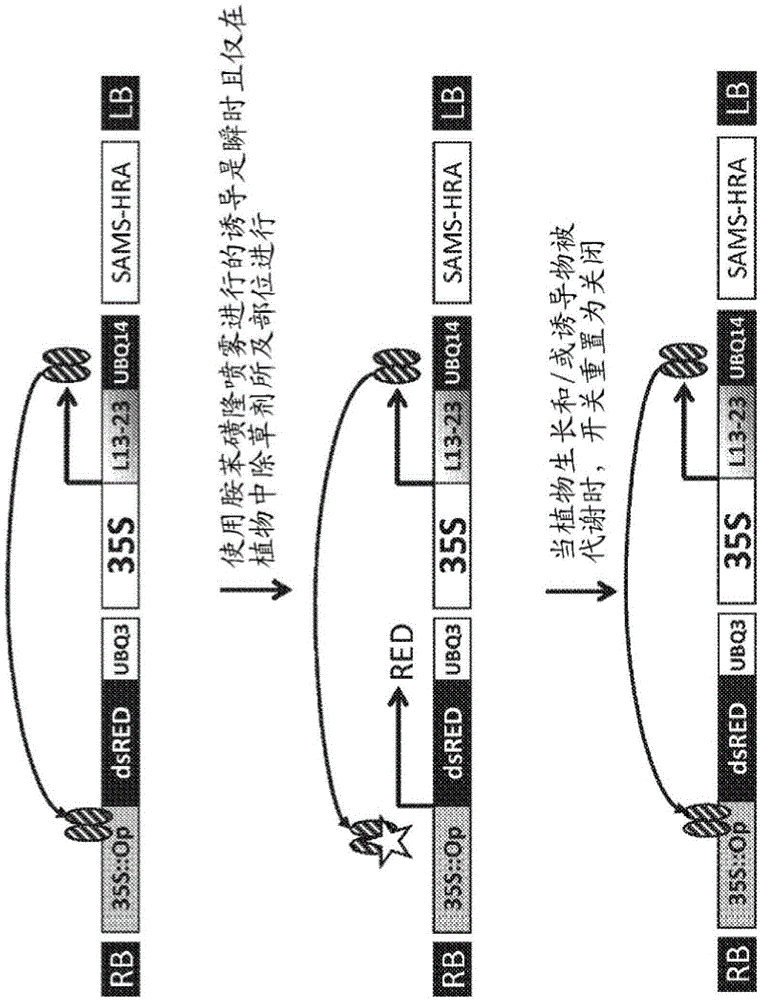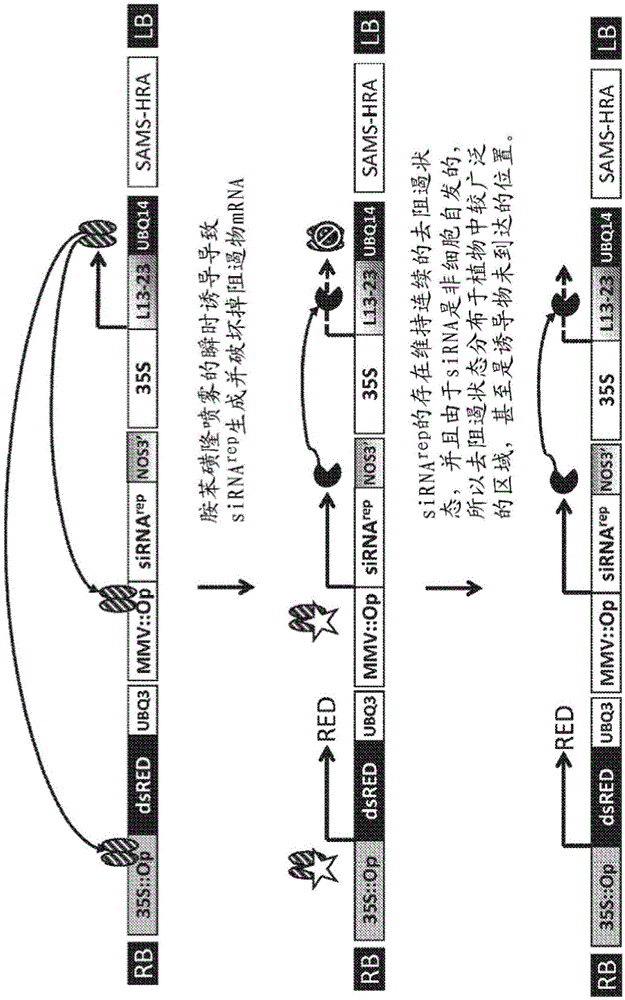Methods and compositions to improve the spread of chemical signals in plants
A compound and chemical technology, applied in the field of molecular biology, can solve the problem of limiting the degree to which chemical gene switches can be activated
- Summary
- Abstract
- Description
- Claims
- Application Information
AI Technical Summary
Problems solved by technology
Method used
Image
Examples
example 1
[0319] Example 1. Use of siRNAs controlled by sulfonylurea repressors targeting sulfonylurea repressors to amplify and enhance induced The spatial distribution of the pilot signal
[0320] One of the major limitations of any chemical induction system in multicellular organisms is the penetration and uniform distribution of the inducer in all tissues (due to altered motility or metabolism). The consequence is that induction of the target gene may be uneven (or absent) in the tissue or cell type of interest. To address this potential problem, it is desirable to provide additional genetic factors to influence the spread of derepression. siRNA has been widely used in eukaryotic systems to reduce target gene expression. In particular, plants have an increased likelihood that the siRNA response can proceed systemically (Palauqui et al. (1997) EMBO J. 16:4738-4745 (Palauqui et al., 1997, "European Molecular Biology Organization Journal" Vol. 16 No. 4738 -4745 pages); Voinnet et...
example 2
[0329] Example 2. Use of miRNAs controlled by sulfonylurea repressors targeting sulfonylurea repressors to amplify and enhance induced The spatial distribution of the pilot signal .
[0330] To show that the presence of an amiRNA targeting a repressor increases expression after induction, two constructs were made. The first construct, the control construct pPHP46916 (10,904bp) (SEQ ID NO: 2111 ), contained the cassette in which the soybean S-adenosylmethionine promoter was operably linked to the soybean acetolactate synthase gene with the HrA mutation, with The HrA mutated soybean acetolactate synthase gene is operably linked to cassette A of the soybean acetolactate synthase terminator (this cassette is used as a selectable marker during plant transformation; positions 81-4062); followed by the T7 promoter in which To the hygromycin phosphotransferase gene, the hygromycin phosphotransferase gene is operably linked to cassette B of the T7 terminator (this cassette is used ...
example 3
[0337] Example 3 Preparation of Soybean Embryo Culture and Model System Transformation Using Soybean Expression Vectors and Implantation Strain regeneration
[0338] Culture conditions :
[0339] Soybean embryogenic suspension cultures (cv. Jack) were maintained in 35 mL of liquid medium SB196 (below) on a rotary shaker at 150 rpm at 26 °C with cool white fluorescent lights and a photoperiod of 16:8 hours Day / night, the light intensity is 60-85μE / m2 / s. Cultures were subcultured every 7 days to two weeks by inoculating approximately 35 mg of tissue into 35 ml of fresh liquid SB196 (the preferred subculture interval was every 7 days).
[0340] Soybean embryogenic suspension cultures were transformed using soybean expression plasmids by the particle gun bombardment method (Klein et al., Nature 327:70 (1987) (Klein et al., "Nature" Vol. A HE instrument (helium modification) performed all transformations.
[0341] Priming of soybean embryogenic suspension cultures :
[...
PUM
 Login to View More
Login to View More Abstract
Description
Claims
Application Information
 Login to View More
Login to View More - R&D
- Intellectual Property
- Life Sciences
- Materials
- Tech Scout
- Unparalleled Data Quality
- Higher Quality Content
- 60% Fewer Hallucinations
Browse by: Latest US Patents, China's latest patents, Technical Efficacy Thesaurus, Application Domain, Technology Topic, Popular Technical Reports.
© 2025 PatSnap. All rights reserved.Legal|Privacy policy|Modern Slavery Act Transparency Statement|Sitemap|About US| Contact US: help@patsnap.com



